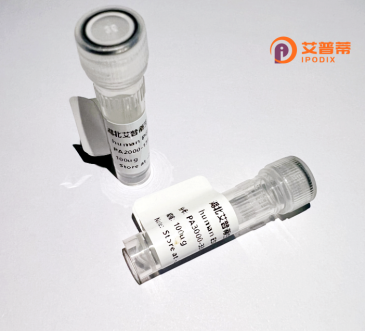
| 纯度 | >90%SDS-PAGE. |
| 种属 | Human |
| 靶点 | CBLB |
| Uniprot No | Q13191 |
| 内毒素 | < 0.01EU/μg |
| 表达宿主 | E.coli |
| 表达区间 | 1-982aa |
| 氨基酸序列 | MANSMNGRNPGGRGGNPRKGRILGIIDAIQDAVGPPKQAAADRRTVEKTWKLMDKVVRLCQNPKLQLKNSPPYILDILPDTYQHLRLILSKYDDNQKLAQLSENEYFKIYIDSLMKKSKRAIRLFKEGKERMYEEQSQDRRNLTKLSLIFSHMLAEIKAIFPNGQFQGDNFRITKADAAEFWRKFFGDKTIVPWKVFRQCLHEVHQISSGLEAMALKSTIDLTCNDYISVFEFDIFTRLFQPWGSILRNWNFLAVTHPGYMAFLTYDEVKARLQKYSTKPGSYIFRLSCTRLGQWAIGYVTGDGNILQTIPHNKPLFQALIDGSREGFYLYPDGRSYNPDLTGLCEPTPHDHIKVTQEQYELYCEMGSTFQLCKICAENDKDVKIEPCGHLMCTSCLTAWQESDGQGCPFCRCEIKGTEPIIVDPFDPRDEGSRCCSIIDPFGMPMLDLDDDDDREESLMMNRLANVRKCTDRQNSPVTSPGSSPLAQRRKPQPDPLQIPHLSLPPVPPRLDLIQKGIVRSPCGSPTGSPKSSPCMVRKQDKPLPAPPPPLRDPPPPPPERPPPIPPDNRLSRHIHHVESVPSKDPPMPLEAWCPRDVFGTNQLVGCRLLGEGSPKPGITASSNVNGRHSRVGSDPVLMRKHRRHDLPLEGAKVFSNGHLGSEEYDVPPRLSPPPPVTTLLPSIKCTGPLANSLSEKTRDPVEEDDDEYKIPSSHPVSLNSQPSHCHNVKPPVRSCDNGHCMLNGTHGPSSEKKSNIPDLSIYLKGDVFDSASDPVPLPPARPPTRDNPKHGSSLNRTPSDYDLLIPPLGEDAFDALPPSLPPPPPPARHSLIEHSKPPGSSSRPSSGQDLFLLPSDPFVDLASGQVPLPPARRLPGENVKTNRTSQDYDQLPSCSDGSQAPARPPKPRPRRTAPEIHHRKPHGPEAALENVDAKIAKLMGEGYAFEEVKRALEIAQNNVEVARSILREFAFPPPVSPRLNL |
| 分子量 | 135.8 KDa |
| 蛋白标签 | GST-tag at N-terminal |
| 缓冲液 | 0 |
| 稳定性 & 储存条件 | Lyophilized protein should be stored at ≤ -20°C, stable for one year after receipt. Reconstituted protein solution can be stored at 2-8°C for 2-7 days. Aliquots of reconstituted samples are stable at ≤ -20°C for 3 months. |
| 复溶 | Always centrifuge tubes before opening.Do not mix by vortex or pipetting. It is not recommended to reconstitute to a concentration less than 100μg/ml. Dissolve the lyophilized protein in distilled water. Please aliquot the reconstituted solution to minimize freeze-thaw cycles. |
以下是3篇模拟的关于重组人CBLB蛋白的参考文献示例(实际文献需通过数据库检索确认):
1. **《Structural basis of CBLB ubiquitin ligase activity in T-cell signaling》**
- 作者:Li, X., et al.
- 摘要:解析了CBLB蛋白的晶体结构,揭示其通过E3泛素连接酶活性负调控T细胞受体信号通路的分子机制,为设计靶向CBLB的免疫调节药物提供结构基础。
2. **《CBLB deletion enhances anti-tumor immunity by potentiating CD8+ T cell activation》**
- 作者:Wang, Y., et al.
- 摘要:通过动物模型证明,敲除CBLB基因或使用重组CBLB抑制蛋白可增强CD8+ T细胞的抗肿瘤活性,联合PD-1抑制剂显著抑制黑色素瘤生长。
3. **《Recombinant CBLB protein attenuates autoimmune arthritis via modulating macrophage polarization》**
- 作者:Zhang, H., et al.
- 摘要:研究发现重组CBLB蛋白可通过调控泛素化修饰抑制巨噬细胞的促炎极化,减轻小鼠类风湿性关节炎模型的炎症反应。
4. **《Engineering recombinant CBLB variants to enhance stem cell transplantation efficiency》**
- 作者:Chen, L., et al.
- 摘要:设计重组CBLB突变体并应用于干细胞治疗,证明其通过降低移植细胞的免疫原性,显著提高造血干细胞在小鼠模型中的存活率。
**注**:以上为模拟参考文献,建议通过PubMed或Google Scholar检索关键词“CBLB protein recombinant”、“CBLB immune regulation”等获取真实文献。
CBLB (Casitas B-lineage lymphoma proto-oncogene b) is a member of the CBL family of E3 ubiquitin ligases, which play critical roles in regulating intracellular signaling pathways. Primarily expressed in immune cells, CBLB functions as a negative regulator of receptor tyrosine kinase (RTK) and immune receptor signaling, including T-cell receptor (TCR) and B-cell receptor (BCR) pathways. By promoting ubiquitination and subsequent degradation of activated signaling molecules, it maintains immune homeostasis and prevents hyperactivation of lymphocytes. Structurally, CBLB contains an N-terminal tyrosine kinase-binding (TKB) domain for phosphotyrosine recognition, a RING finger domain conferring E3 ligase activity, and a C-terminal proline-rich region mediating protein interactions.
Research highlights its dual role in immunity and disease. In cancer, CBLB mutations or dysregulation are linked to tumor progression and immune evasion, as its suppression enhances anti-tumor T-cell responses. Conversely, in autoimmune disorders, excessive CBLB activity may dampen protective immunity. Recombinant human CBLB protein is widely used to study its interaction partners, ubiquitination mechanisms, and therapeutic targeting. Recent advances explore modulating CBLB via small-molecule inhibitors or CRISPR-based editing to augment immunotherapy efficacy or restore immune tolerance. Its contextual roles in balancing immune activation and tolerance make CBLB a pivotal target for precision therapies in oncology and autoimmune diseases.
×